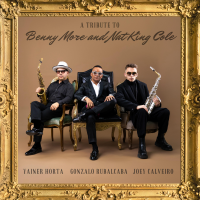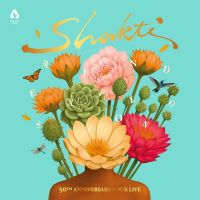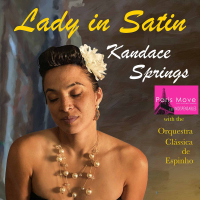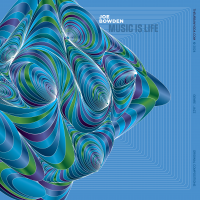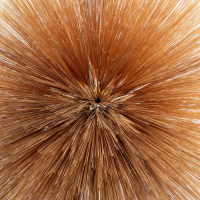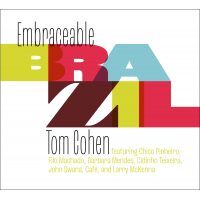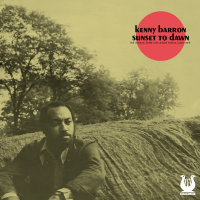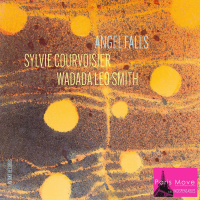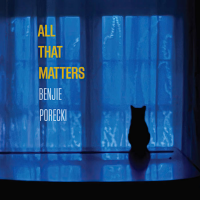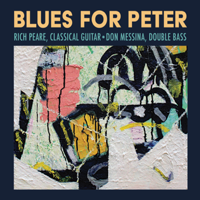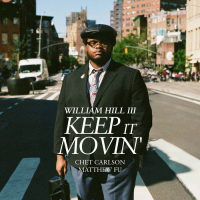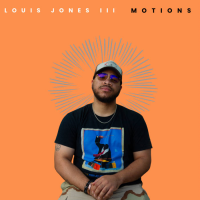Home » Jazz Articles » Reassessing » John Coltrane: John Coltrane: Kulu Sé Mama
John Coltrane: John Coltrane: Kulu Sé Mama
 John Coltrane
John ColtraneKulu Sé Mama
Impulse!
1967
It is rare to find Kulu Sé Mama on somebody's desert-island list of recordings by saxophonist John Coltrane. Why, is a mystery. Despite the brooding intensity of the cover photo, the performances are accessible and delightful, and, as an artifact, although it was recorded over three sessions in summer and fall 1965 in New Jersey and Los Angeles, with two lineups, the album hangs together beautifully. Released in January 1967, six months before Coltrane's passing, it was one of the last LPs to be assembled by Coltrane in collaboration with Bob Thiele, his longtime producer at Impulse!.
Coltrane bequeathed many gifts to music, among them the nascence of a style that, in the late 1960s and early 1970s, became known as "astral jazz" under the parallel trajectories of his wife, pianist/harpist Alice Coltrane and saxophonist Pharoah Sanders. While any John Coltrane album is rewarding, Kulu Sé Mama's proximity to astral jazz will make it, for some listeners, especially enjoyable.
Alice Coltrane's and Sanders' music had several signature elements: avowed spirituality; prominent use of African and Asian percussion and drone instruments (emblematically, the Indian tamboura); vocalized saxophones heavy on velvet-sandpaper multiphonics; sweeping pianos and/or harps; hummable tunes; rock steady ostinatos; and long, lyrical improvisations. At its best, the combination produced trance-like music of transcendent beauty.
The first completely formed astral album was Sanders' Tauhid (Impulse!, 1967), recorded in late 1966, when Sanders was a regular member of Coltrane's band. Its roots are clearly audible on the 18:49 minute title track of Kulu Sé Mama.
"Kulu Sé Mama," recorded in October 1965 in Los Angeles, features Coltrane's classic quartet—with pianist McCoy Tyner, bassist Jimmy Garrison and drummer Elvin Jones—but every instrument save the piano is doubled up by additional musicians. Sanders joins Coltrane on tenor, Donald Garrett joins Garrison on bass (and bass clarinet), and Frank Butler joins Jones on drums. Juno Lewis, who wrote the tune and contributes chanted vocals (another astral jazz signature), plays a variety of West African hand drums, bells and a conch shell.

The instrumentation alone takes "Kulu Sé Mama" in an astral direction, and so do Coltrane's, Sanders' and Tyner's motif-rich solos, the mantra-like ostinato shared by the bassists, and the use of multiple drummers/percussionists. To make "Kulu Sé Mama" fully paid-up astral jazz, all you would need to do is add a tamboura (and maybe an alto flute and some incense).
Which is exactly what Alice Coltrane did with some of the material recorded by the unaugmented quartet at the June 1965 sessions at Rudy Van Gelder's studio in New Jersey, which produced "Vigil" and "Welcome." Coltrane added a tamboura and a string section, and released the results on Infinity (Impulse!, 1972). Kulu Sé Mama's closing track, the lovely "Welcome," did not get the treatment, which is a pity, for it would have lent itself well to her string arrangements. As it is, Garrison's arco bass and Jones' cymbal splashes suggest a luxuriant ambiance.
The middle track, "Vigil," is a tenor and drums feature on a level with Coltrane's duets with drummer Rashied Ali on Interstellar Space (Impulse!, 1967), but given a firmer foundation by the presence of Elvin Jones. With "Kulu Sé Mama" the album's sunrise, and "Welcome" its closing embrace, "Vigil" is the midday heat.
Kulu Sé Mama is essential listening for anyone interested in the immediate pre-history of astral jazz.
(A half dozen of Pharoah Sanders' and Alice Coltrane's late 1960s/early 1970s astral albums were reissued in October 2011 in Impulse!'s 2-on-1 series and are reviewed here).
Tracks: Kulu Sé Mama (Juno Sé Mama); Vigil; Welcome.
Personnel: John Coltrane: tenor saxophone; McCoy Tyner: piano (1, 3); Jimmy Garrison: bass (1, 3); Elvin Jones: drums; Pharoah Sanders: tenor saxophone (1); Donald Garrett: bass, bass clarinet (1); Frank Butler drums (1); Juno Lewis: vocals, percussion (1).
Photo Credit Courtesy of William Claxton
Tags
PREVIOUS / NEXT
Support All About Jazz
 All About Jazz has been a pillar of jazz since 1995, championing it as an art form and, more importantly, supporting the musicians who make it. Our enduring commitment has made "AAJ" one of the most culturally important websites of its kind, read by hundreds of thousands of fans, musicians and industry figures every month.
All About Jazz has been a pillar of jazz since 1995, championing it as an art form and, more importantly, supporting the musicians who make it. Our enduring commitment has made "AAJ" one of the most culturally important websites of its kind, read by hundreds of thousands of fans, musicians and industry figures every month.






